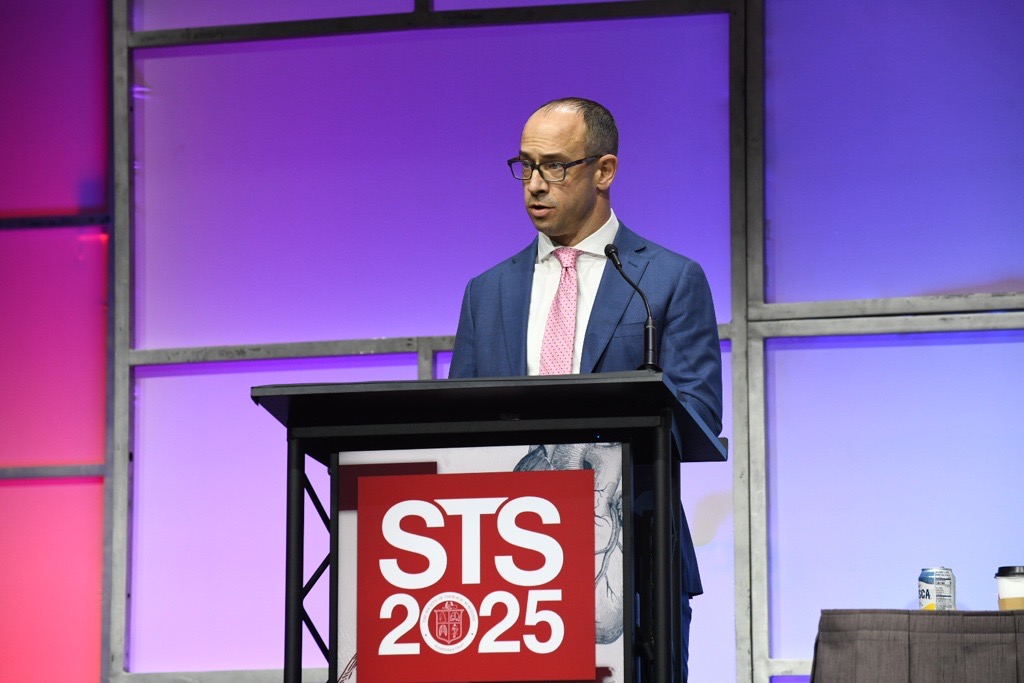Sublobar Resection Versus Lobectomy: Dr. Seder Discusses Real-World Outcomes in Early-Stage NSCLC
By Christopher Seder, MD, Cecilia Brown - Last Updated: January 31, 2025Christopher Seder, MD, of Rush University Medical Center in Chicago, joined Lung Cancers Today to discuss real-world research on surgical outcomes in lung cancer, which he presented at the 61st Annual Meeting of the Society of Thoracic Surgeons (STS) in Los Angeles.
The research represents the “largest study of real-world patients with 10-year follow-up data and linkage between three separate databases,” Dr. Seder said, explaining that it analyzed surgical outcomes of more than 32,000 patients with stage 1A non–small cell lung cancer (NSCLC) by using data from the STS General Thoracic Surgery Database, as well as long-term follow-up linked to the National Death Index and Centers for Medicare and Medicaid Services database.
“Those patients underwent a number of different operations, some lobectomies—which is the most common operation—and some sublobar resections, which include both segmentectomies as well as wedge resections,” Dr. Seder said. “Our question was: In the real world, when you look at surgeons operating in clinical practice, do sublobar resections provide as good of an overall survival benefit as you see in trials?”
It was important to address this question with real-world data, Dr. Seder explained, because multiple clinical trials, such as CALGB 140503, have concluded that sublobar resections are noninferior to lobectomy for this population of patients.
“What we found, surprisingly, was that lobectomies did better than sublobar resections and that seems to be primarily driven by the wedge resections, not necessarily the segmentectomies,” Dr. Seder said. “Wedge resections had significantly worse outcomes. They had less lymph nodes sampled, they had more positive margins and they had less nodal upstaging, suggesting that the nodes weren’t sampled as well.”
However, it’s important to recognize that the data from the real-world study are “not at all contradictory” to findings from studies such as CALGB 140503, he said. Rather, these results are complementary to the clinical trial findings.
“In the discussion of the CALGB trial, the authors state that unless you follow the exact trial protocol that is described in the study—which might include taking lymph nodes at the time of surgery, making sure that all the margins are negative and [using] very strict patient selection criteria—you can’t expect the same results as you see in trials,” Dr. Seder said.
For example, the new data suggest that the CALGB 140503 finding “does not give free reign to any surgeon to just perform a wedge resection on any patient who has a sub-two-centimeter non–small cell lung cancer,” he explained.
“There has to be a bit more that goes into it. And what that ‘bit more’ is, the study can’t necessarily define, but we have some ideas,” Dr. Seder said. “It may mean making sure that all of your margins are adequate. It may mean that you have to take enough lymph nodes and that’s what we suspect is the case.”
He also addressed key questions that have been raised regarding the real-world data on wedge resections.
“Some people have wondered: If we’re showing that wedge resections don’t perform as well in the real world as segmentectomies or as lobectomies, does that mean that we should just send all of our patients who have wedge resections to radiation or SBRT [stereotactic body radiation therapy]? I don’t think that that’s the case at all,” Dr. Seder said. “In fact, there are a couple of things that surgery provides that you don’t get from any kind of radiation therapy. One is a good lymph node dissection to adequately stage patients. The second is definitive pathology, whether that be needed for making the diagnosis or for next-generation sequencing, it’s important to have a good piece of tissue to work with when you’re thinking about future therapies.”
However, questions remain about patient and surgical procedure selection, he said, emphasizing that these new findings “should be a call to action to our medical oncology and thoracic oncology teams to not only consider putting patients on trial, but try to figure out what is best for these patients, especially high-risk patients.”






 © 2025 Mashup Media, LLC, a Formedics Property. All Rights Reserved.
© 2025 Mashup Media, LLC, a Formedics Property. All Rights Reserved.